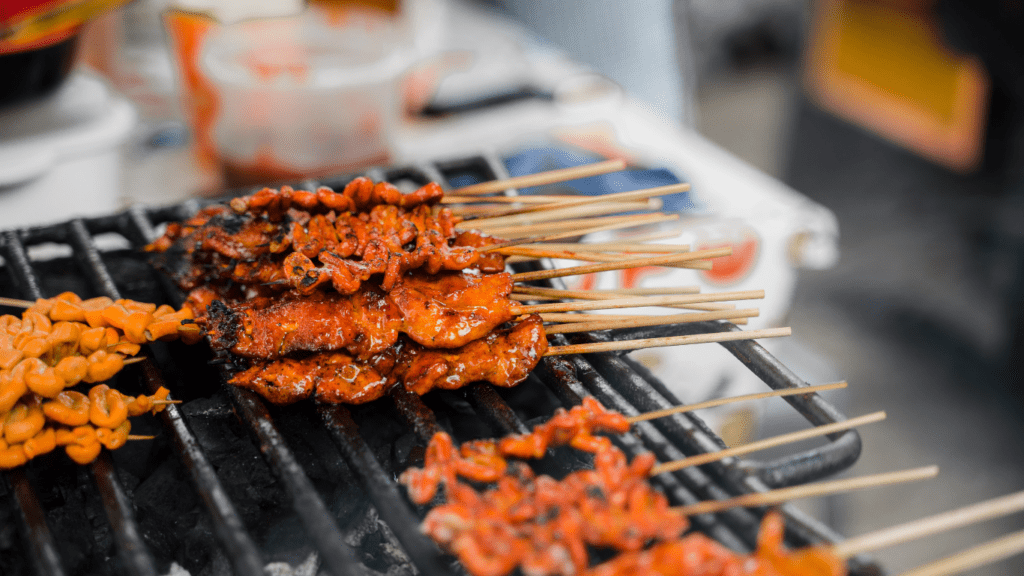Stepping into Bangkok’s bustling streets is like entering a vibrant culinary wonderland. From the savory aroma of sizzling pad thai to the sweet temptation of mango sticky rice, every corner beckons with a promise of gastronomic delight.
As a food enthusiast, I’ve always been captivated by the rich tapestry of flavors that Bangkok’s street food scene has to offer. Navigating through the maze of food stalls and bustling markets, I’ve discovered hidden gems and culinary treasures that have left me craving for more.
In this article, I’ll take you on a virtual tour of Bangkok’s lively street food scene, sharing insider tips and must-try dishes that will tantalize your taste buds. Join me as we delve into the heart of Bangkok’s culinary culture and uncover the secrets of its world-renowned street food.
The Origins of Bangkok’s Street Food Culture
Exploring Bangkok’s vibrant street food scene offers a window into the city’s rich cultural heritage, where food transcends mere sustenance and becomes a celebration of flavors. From humble street hawkers to modern-day culinary innovators, each dish is a testament to the fusion of tradition and creativity that defines Bangkok’s food culture.
Rooted in centuries of local culinary practices, Bangkok’s street food has evolved over time, influenced by both regional and international flavors. The result is a diverse and dynamic food scene that continues to thrive, offering a sensory journey through the past, present, and future of Thai cuisine.
Popular Street Food Markets in Bangkok
Exploring Bangkok’s vibrant street food scene wouldn’t be complete without visiting some of the popular street food markets in the city. Here are two must-visit destinations that offer a wide array of delicious and iconic Thai dishes:
Chatuchak Weekend Market
Chatuchak Weekend Market is a bustling hub of shopping and street food, offering a plethora of culinary delights to satisfy every palate. As I wandered through the maze of stalls, the tantalizing aromas of grilled meats, fresh fruit juices, and spicy curries enveloped me, tempting me to try a bit of everything.
From traditional dishes like som tum (papaya salad) to trendy treats like rainbow-colored iced desserts, Chatuchak market is a food lover’s paradise.
Chinatown (Yaowarat)
Stepping into Chinatown, or Yaowarat as the locals call it, is like entering a world where the past and present merge seamlessly through food. Walking down the bustling streets lined with vendors selling everything from crispy pork belly to steaming bowls of noodle soup, I immersed myself in the rich tapestry of flavors that define this historic neighborhood.
Each bite tells a story of the cultural fusion that has shaped Chinatown’s culinary identity, making it a must-visit destination for food enthusiasts looking to experience the heart of Bangkok’s street food scene.
Must-Try Street Food Delicacies in Bangkok
Exploring Bangkok’s street food scene is a culinary adventure filled with diverse flavors and mouth-watering dishes. As I navigate through the bustling markets and vibrant streets of the city, I encounter an array of must-try street food delicacies that capture the essence of Bangkok’s rich food culture. Here are some iconic dishes that every food enthusiast should savor:
- Pad Thai: A classic stir-fried noodle dish that blends sweet, sour, and savory flavors, topped with crunchy peanuts and fresh lime.
- Mango Sticky Rice: A heavenly dessert combining perfectly ripe mango slices with sweet coconut sticky rice, drizzled with rich coconut cream.
- Tom Yum Goong: A spicy and tangy soup featuring succulent shrimp, fragrant lemongrass, kaffir lime leaves, and chili.
- Som Tum: A refreshing green papaya salad that tantalizes the taste buds with its crunchy texture and spicy, tangy dressing.
- Gaeng Keow Wan Gai: Thai green curry with tender chicken, aromatic Thai basil, creamy coconut milk, and a hint of heat from green chilies.
- Moo Ping: Grilled pork skewers marinated in a savory blend of fish sauce, soy sauce, garlic, and palm sugar, served with sticky rice.
Each of these dishes tells a unique story of Thai culinary heritage, blending traditional ingredients and cooking techniques to create unforgettable flavors. Whether you’re strolling through Chatuchak Weekend Market or immersing yourself in the vibrant chaos of Chinatown, these must-try street food delicacies are essential experiences that embody the spirit of Bangkok’s bustling street food scene.
Food Safety and Hygiene Practices in Bangkok’s Street Food Scene
Exploring Bangkok’s vibrant street food scene is a sensory adventure, but ensuring food safety and hygiene practices are crucial when indulging in these culinary delights. In bustling markets like Chatuchak and Chinatown, where flavors entice and aromas captivate, it’s essential to be mindful of certain practices that uphold cleanliness and ensure a safe dining experience.
- Washing Hands Regularly: Maintaining proper hand hygiene is fundamental in street food culture. Vendors handling food should wash their hands frequently to prevent the spread of bacteria and maintain cleanliness throughout the food preparation process.
- Fresh Ingredient Handling: The charm of Bangkok’s street food lies in its fresh ingredients. Vendors should prioritize the proper storage and handling of ingredients to preserve their quality and minimize the risk of contamination.
- Cleaning Cooking Utensils: From woks to ladles, ensuring that cooking utensils are cleaned thoroughly after each use is paramount. Proper sanitation of utensils reduces the chances of cross-contamination and upholds hygiene standards in street food kitchens.
- Cooking at High Temperatures: To eliminate harmful bacteria, street food vendors often cook at high temperatures. Whether it’s grilling skewers or stir-frying noodles, the heat not only enhances flavor but also ensures that the food is safe for consumption.
- Displaying Food Safely: Vendors should display their food in a manner that protects it from dust, pests, and other contaminants. Proper covering and storage practices help maintain the freshness and cleanliness of the dishes on offer.
- Personal Hygiene Practices: In addition to food-related practices, vendors should also prioritize personal hygiene. Clean attire, hair restraints, and overall cleanliness contribute to the overall hygienic environment of a street food stall.
By adhering to these food safety and hygiene practices, both vendors and customers can enjoy the bustling street food scene in Bangkok confidently, knowing that the rich flavors and aromatic spices are complemented by a commitment to cleanliness and safety.



 Justin McLeish has played an important role in developing Drip Travels Hide, using his passion for adventure and storytelling to create compelling travel content. His work blends destination highlights with practical travel advice, ensuring readers have all the tools they need for an unforgettable journey. Whether showcasing must-visit locations or offering insider tips on navigating new cultures, Justin helps make travel planning effortless and exciting. His contributions bring a dynamic and informative edge to the platform, making every trip feel more accessible and enriching.
Justin McLeish has played an important role in developing Drip Travels Hide, using his passion for adventure and storytelling to create compelling travel content. His work blends destination highlights with practical travel advice, ensuring readers have all the tools they need for an unforgettable journey. Whether showcasing must-visit locations or offering insider tips on navigating new cultures, Justin helps make travel planning effortless and exciting. His contributions bring a dynamic and informative edge to the platform, making every trip feel more accessible and enriching.